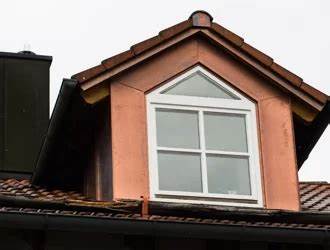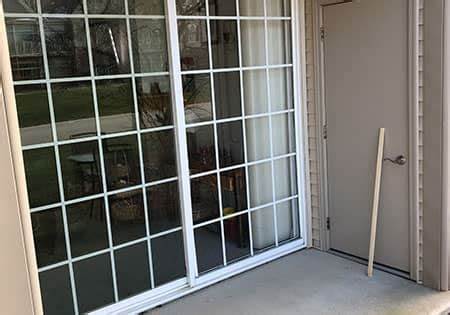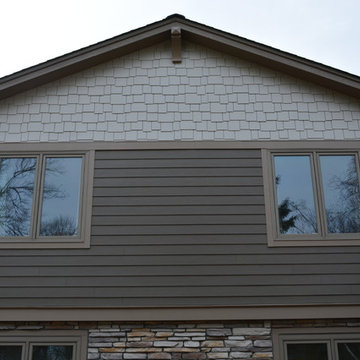Embark on a journey into the realm of international standards for roofing and exterior projects. Dive into the significance of adhering to these standards, explore key organizations setting the benchmarks, and unravel the benefits of compliance in this dynamic field.
 Delve deeper into the types of standards, the compliance and certification processes, the implications of non-compliance, and the innovative trends shaping the future of construction practices.
Delve deeper into the types of standards, the compliance and certification processes, the implications of non-compliance, and the innovative trends shaping the future of construction practices.
 Delve deeper into the types of standards, the compliance and certification processes, the implications of non-compliance, and the innovative trends shaping the future of construction practices.
Delve deeper into the types of standards, the compliance and certification processes, the implications of non-compliance, and the innovative trends shaping the future of construction practices.
Overview of International Standards for Roofing and Exterior Projects
Adhering to international standards in construction is crucial to ensure quality, safety, and durability of roofing and exterior projects. These standards are established to set guidelines and requirements that must be met to guarantee the structural integrity of buildings and the protection of occupants.Key Organizations Setting International Standards
- The International Organization for Standardization (ISO) is a primary organization that develops and publishes international standards for various industries, including construction.
- The American Society for Testing and Materials (ASTM) is another key organization that focuses on creating standards for materials used in construction projects.
- The International Code Council (ICC) plays a crucial role in developing building codes and standards that are widely adopted globally.
Benefits of Following International Standards
- Ensures quality and consistency in construction practices, leading to reliable and long-lasting roofing and exterior projects.
- Promotes safety by incorporating best practices and guidelines to prevent accidents and structural failures.
- Facilitates international trade and collaboration as adherence to common standards allows for seamless communication and understanding among professionals worldwide.
Types of International Standards for Roofing and Exterior Projects
International standards for roofing and exterior projects encompass a wide range of guidelines and requirements to ensure quality, safety, and durability. This includes standards related to roofing materials, installation practices, and specific requirements for different types of exterior projects.Standards for Roofing Materials
- ASTM D3462 - Standard Specification for Asphalt Shingles Made from Glass Felt and Surfaced with Mineral Granules
- EN 544 - Roofing products from bitumen sheets for waterproofing - Definitions and characteristics
- ISO 16000 - Indoor air - Part 23: Performance test for evaluating the reduction of formaldehyde concentrations by sorptive building materials
Standards for Installation Practices
- NRCA (National Roofing Contractors Association) - Roofing Manual: Guidelines for Roof System Components
- RCI, Inc. (Roofing Consultants Institute) - Guidelines for Roofing Installation
- BS 5534 - Code of practice for slating and tiling
Comparison of Standards for Residential vs. Commercial Exterior Projects
- Residential projects often focus on aesthetics, energy efficiency, and cost-effectiveness, while commercial projects prioritize durability, longevity, and compliance with building codes.
- Standards for residential projects may include guidelines for landscaping, siding materials, and energy-efficient windows, whereas commercial projects may have specific requirements for fire safety, accessibility, and structural integrity.
- Both residential and commercial projects need to adhere to standards related to environmental impact, sustainability, and maintenance to ensure the longevity of the exterior components.
Compliance and Certification Processes
Ensuring compliance with international standards for roofing and exterior projects involves a series of steps to guarantee the quality and safety of the construction. Certification plays a crucial role in verifying that these standards are met, providing assurance to stakeholders and customers.Steps for Ensuring Compliance
- Understanding the specific international standards applicable to the project.
- Implementing the necessary design and construction practices according to the standards.
- Conducting internal quality checks and inspections throughout the project lifecycle.
- Preparing documentation and records to demonstrate adherence to the standards.
- Engaging in third-party inspections and audits to validate compliance.
Role of Certification
Certification serves as an official recognition that a particular roofing or exterior project meets the specified international standards. It acts as a seal of approval, enhancing the credibility and trustworthiness of the construction in the eyes of clients, regulatory bodies, and the public.Significance of Third-Party Inspections
Third-party inspections play a critical role in the certification process by providing an impartial evaluation of the project's compliance with international standards. These independent assessments help in ensuring objectivity and transparency, as well as identifying any areas that may need improvement or correction.Implications of Non-Compliance
Failure to adhere to international standards in roofing and exterior projects can have serious consequences, ranging from safety hazards to legal repercussions.Potential Risks
- Structural Integrity: Non-compliance with standards can compromise the structural integrity of roofs and exteriors, leading to collapses or other safety hazards for occupants.
- Quality Issues: Using substandard materials or improper installation techniques can result in poor quality outcomes, such as leaks, mold growth, and premature deterioration.
- Safety Concerns: Non-compliance may create safety hazards for workers during installation and maintenance, as well as for building occupants due to structural weaknesses.
Legal Implications
- Contractual Obligations: Contractors who fail to meet international standards may breach contractual agreements, leading to disputes, legal actions, and financial liabilities.
- Regulatory Compliance: Non-compliance with standards can result in violations of building codes and regulations, exposing contractors to fines, penalties, and project delays.
- Lawsuits and Claims: If non-compliance causes property damage, injuries, or other harm, contractors may face lawsuits, claims, and damage to their reputation.
Real-World Consequences
- Case Study: In a recent project where roofing standards were not followed, the roof experienced leaks shortly after completion, leading to costly repairs and delays in occupancy.
- Legal Action: A contractor was sued for non-compliance with exterior insulation standards, resulting in a settlement payout and damage to their professional reputation.
- Safety Incident: Due to non-compliance with safety standards during roof installation, a worker sustained injuries, leading to legal action and compensation claims.







